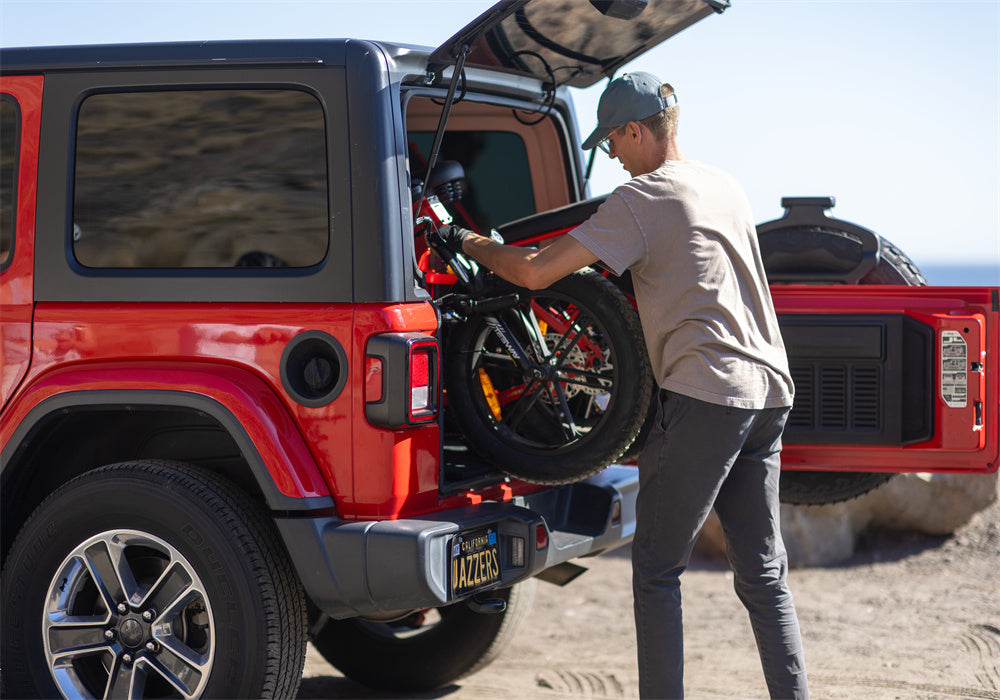As winter approaches, it’s crucial to properly store your electric bike to protect it from the elements and ensure it remains in optimal condition.
Cold temperatures, moisture, and inactivity can all contribute to wear and tear if not handled carefully.
This detailed guide will walk you through the essential steps to store your electric bike during winter, focusing on key areas like battery care, protection from moisture, and maintenance of moving parts.
1. Clean and Inspect the Bike Thoroughly
Before putting your electric bike away for the winter, a thorough cleaning is necessary to remove any dirt, grime, or moisture that has accumulated during use.
Start by wiping down the frame with a damp cloth and mild soap. Pay special attention to areas where mud and dirt may have built up, such as the wheels, chain, and gears.
Cleaning the drivetrain and applying lubricant to the chain will prevent rust and ensure smooth operation when you bring your bike out of storage.
Once the bike is clean, it’s important to inspect it for any damage or wear.
Look closely at the frame, cables, and bolts for any signs of cracks or fraying. Addressing these issues now can prevent further deterioration during the winter months.
2. Battery Care and Storage
The ebike battery is arguably the most important component of your electric bike, and special care should be taken when storing it during the colder months.
Extreme temperatures can degrade battery life, especially cold weather, which is why it’s advisable to remove the battery from the bike and store it indoors in a temperature-controlled environment.
A charge level of about 50-80% is ideal for long-term storage, as storing it fully charged or completely depleted can reduce its overall lifespan.
During the winter, you should monitor the battery's charge level and recharge it if it drops below 50%. Storing the battery in a cool, dry place, away from direct sunlight or freezing conditions, will keep it in good condition.
If your storage space is particularly cold, such as a garage or shed, consider bringing the battery inside to prevent exposure to freezing temperatures.
SEE ALSO Tips for Safe and Enjoyable Autumn Cycling

3. Protect the Bike from Moisture
Moisture is one of the biggest threats to an electric bike in storage.
Rust, corrosion, and damage to both electrical and mechanical components can result from prolonged exposure to damp conditions. To mitigate this, ensure that the bike is stored in a dry place, ideally indoors where humidity levels are controlled.
If indoor storage is not an option, using a high-quality waterproof bike cover can provide protection from moisture.
In addition to using a bike cover, storing the bike in a well-ventilated area helps to prevent condensation buildup, which can occur in cold environments.
If the storage space is prone to dampness, consider using a dehumidifier to reduce moisture in the air.
4. Tire Maintenance During Storage
Tire maintenance is often overlooked during long-term bike storage, but neglecting this aspect can lead to flat spots or deterioration.
To prevent these issues, ensure the tires are inflated to the manufacturer’s recommended pressure before storing the bike.
Tires can lose pressure over time, especially if the bike is left in one position for extended periods.
Storing the bike on a stand can help alleviate the pressure on the tires and prevent flat spots from forming.
If a stand is not available, periodically rotating the bike's position throughout the storage period can also minimize tire wear.
5. Protect the Electrical Components
The electrical components of an electric bike, such as the motor, display, and wiring, require extra attention when preparing the bike for winter storage.
Disconnecting the electrical system, where possible, helps prevent corrosion caused by moisture buildup.
Covering the sensitive areas, such as the connectors and display screen, with protective caps or covers adds an extra layer of defense against dust and moisture.
If your storage space is susceptible to extreme cold, ensure that the bike is kept insulated, as freezing temperatures can affect not only the battery but other electrical components as well.
Keeping the bike in a dry, temperate environment will extend the life of these crucial systems.

6. Lubricate Moving Parts
Before storing your bike for winter, it’s important to lubricate all moving parts to prevent rust and ensure smooth operation when you’re ready to ride again.
Focus on lubricating the chain, brake cables, and pedal joints.
Grease should also be applied to areas where metal parts may rub against each other, such as the headset and bottom bracket.
Proper lubrication will protect the bike’s moving components from cold weather and moisture, keeping them from seizing up during storage.
When spring arrives, a well-lubricated bike will require far less maintenance before hitting the road.
7. Store the Bike in the Right Position
The position in which you store your bike can impact its longevity.
Ideally, the bike should be stored upright on a stand to distribute weight evenly and avoid placing unnecessary strain on any one component.
Storing the bike upright also makes it easier to maintain tire pressure and inspect the bike during the winter months.
If a bike stand is not available, avoid laying the bike flat on the ground, as this can cause misalignment or damage to delicate parts like the derailleur or handlebars.
Placing the bike in a stable position with proper support is crucial for maintaining its structural integrity over time.
8. Perform Periodic Checks During Storage
Even if you’re not planning to ride your electric bike during the winter, it’s a good practice to check on it periodically.
This allows you to catch any issues early, such as low tire pressure or changes in the battery charge level.
Regular checks ensure that your bike remains in optimal condition throughout the storage period, reducing the likelihood of unpleasant surprises when you’re ready to take it out of storage.
A quick monthly inspection of the tires, chain, and battery is sufficient to maintain the bike’s overall health.
If the tires have lost air, re-inflate them, and if the battery charge has dropped, give it a slight recharge to maintain its performance.
9. Preparing Your Electric Bike for Spring Use
Once the winter months are over, getting your bike ready for use again requires a few steps.
Start by recharging the battery fully and ensuring it is securely connected to the bike.
Check the tire pressure and inflate the tires if necessary, as they may have lost air during storage. Inspect the brakes, gears, and chain to ensure everything is functioning properly.
Testing the bike’s performance in a safe environment before taking it on the road is a good idea, as this allows you to identify any issues that may have arisen during the storage period.
A final inspection of the electrical components and battery will ensure that the bike is ready for smooth, efficient operation when you hit the road again.
FAQs
Should I deflate the tires before storing my electric bike?
No, it’s better to inflate the tires to the recommended pressure. Properly inflated tires help prevent flat spots from forming during long-term storage.
What’s the best temperature to store my electric bike battery?
The battery should be stored in a cool, dry environment, ideally between 50-68°F (10-20°C), to prevent damage from extreme temperatures.
Do I need to lubricate my electric bike before storage?
Yes, lubricating the chain, brake cables, and other moving parts is essential to prevent rust and ensure smooth operation when you’re ready to ride again.
Don't Miss These
Do All Electric Bikes Use the Same Battery?
Pedal Assist vs Throttle: Which Is Better for Your Bike?
How Much Does It Cost to Replace the Battery in an Electric Bike?
Which Battery Size is Best for Your E-Bike Performance
What Sensors Are Used in Electric Bike?






Share:
How Far Can You Go on an Electric Bike?
How to Choose the Right Electric Bike for You